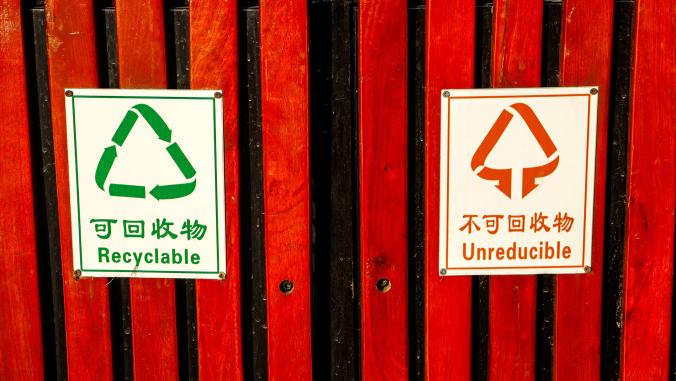Scaling plastic waste solutions, even imperfect ones
Getting from here to a circular economy will take a lot of interim steps. In parallel, we must build the foundations for a new material reality.

Plastic pollution in waterways and coastlines is an overall system failure of how we design, use and dispose of materials. The myriad of lightweight, durable plastics makes it incredibly hard to recover and sort these resources into usable quantities of similar polymer types. This reduces its embedded value and incentive for collection.
The lack of localized recycling facilities in smaller cities, municipalities and rural areas exacerbates low recycling rates. By not having even basic recycling systems and relatively simple equipment in place, the opportunity to create value from our waste is lost.
Globally, it is estimated that only 9 percent of all plastics produced are actually recycled, despite the feel-good embossed recycling triangle found on the bottom of products to tell consumers and recyclers of its type and recyclability. Many consumers have grown to assume that this triangle means that they are "playing their part" by using such materials, assuming that there is full recycling of these products and packages at their end-of-life. Sadly, this is not the case.
Consider the global reach of many companies and their broad export of plastic materials and packaging, sometimes to billions of customers daily. Yet many of these locations do not have recycling capacity to handle the "wonder material" that is plastic. Due to the low cost of plastic for packaging and single-use products, companies do not make much effort to recover these resources in their afterlife. The result for these communities is often wide-scale pollution from inland to the sea — and logoed "branded trash" potentially causing reputational liabilities for companies.
For the many of us who are encouraging the reduction of plastic pollution, we must not shoot ourselves in the foot as we transition to better solutions — and thousands of solutions are needed. We should learn to think broadly, be open to a wide variety of options to the problem and to think in different time horizons. Some solutions can be taken now. Other innovations, such as step-changes in the materials we use, take time to develop. These need market and systems entry today, so that the full benefits can be felt in the future.
Recycling is not the means to all ends. It is one piece of the complex puzzle of waste reduction and movement into a circular economy. We should promote innovations in resource (waste) collection, material repurposing for value and the jobs that are created along the way.Recycling is one piece of the complex puzzle of waste reduction and movement into a circular economy.
In parallel, however, we should be working on building the foundations for a new material reality, which includes creating new materials that have the potential to be benign to nature. A new reality where radical reduction and new material innovation will go hand in hand. As we start to understand some of the negative consequences of recycling (such as material toxicity and degradation), we can be sure that any other solution will come with its share of unintended consequences. It is our obligation to anticipate those as much as possible.
The debate on unintended consequences, however, often immobilizes the progress that is urgently needed for those step-changes to happen. Concerns include the reduction of plastic packaging that can lead to increased food waste, the recycling of toxic materials, bio-based materials that might compete with food, and biodegradable materials that can impede recycling systems.The debate on unintended consequences often immobilizes the progress that is urgently needed.
We must remember that the world is not perfect, and the movement from 0 percent to 100 percent perfection in a single shift is virtually impossible.
Should we constrain, ostracize and condemn movements if there are a few uncertainties or externalities along the way, but which are far less "bad" than the benefits being created? The immediate answer should be "no," because even a marginal benefit of, say, 5 percent, could be the catalyst that brings positive PR to a company.
And that solution can snowball, rapidly scaling repetition and lead to higher-value impacts. Understanding the possible negative consequences at an early stage allow us to anticipate and to start to mitigate them. But we often can’t solve them instantaneously, as some level of scale and in-market learnings are needed. Yet this should not cause us to freeze in our tracks with inaction and uncertainty.
We should never fear the benefits of progression and improvements, even in small scale, but strangely it seems that some expect perfection in change from Day One, undermining the hope, momentum, investment and adoption of something that can grow into an indispensable part of the complex puzzle to avoid plastic pollution.
Every business and service provider has some type of calculable negative externality, but if the new solution reduces other externalities by a large scale along the way, the quest for perfection should not stop us from innovating to reach that ultimate goal in the future.






